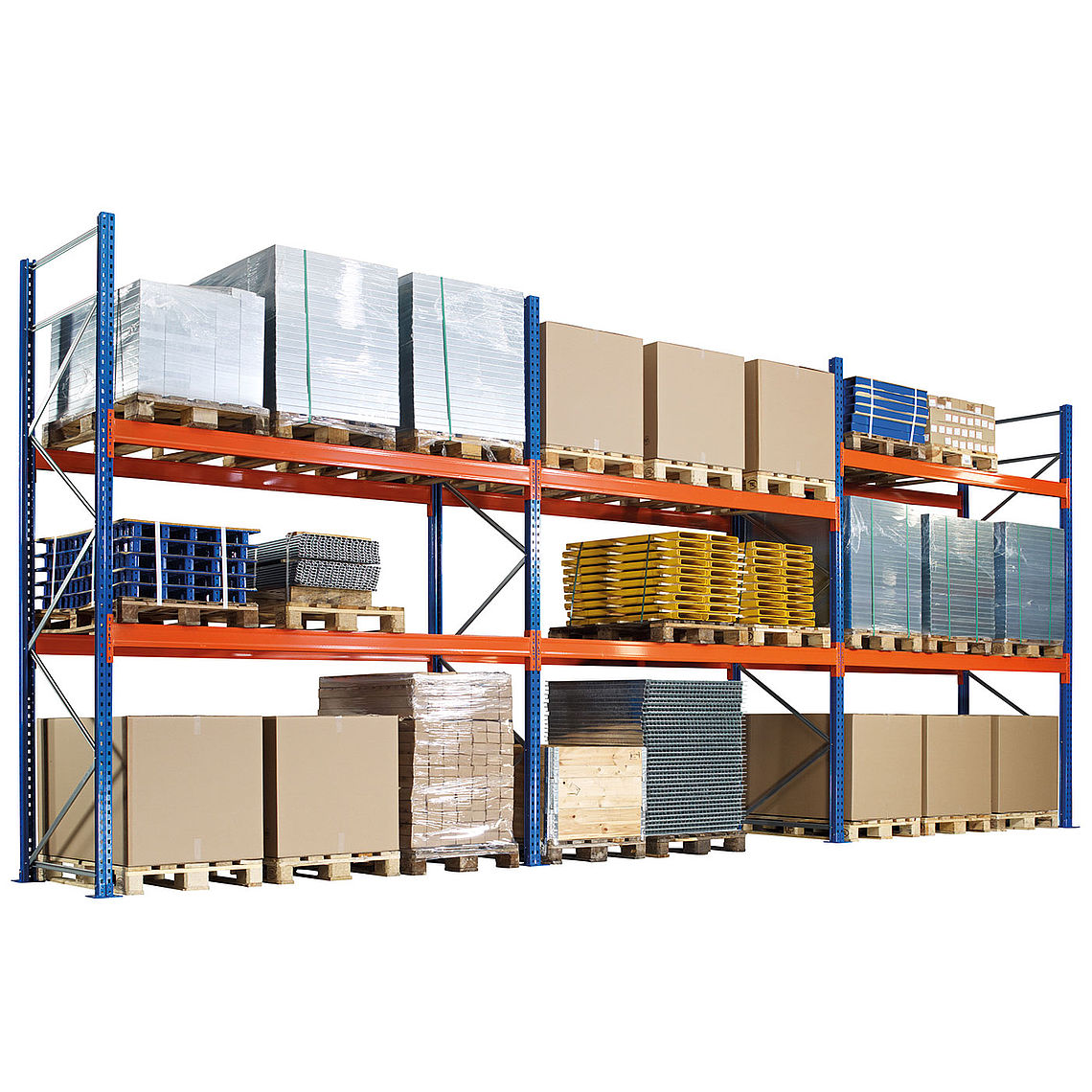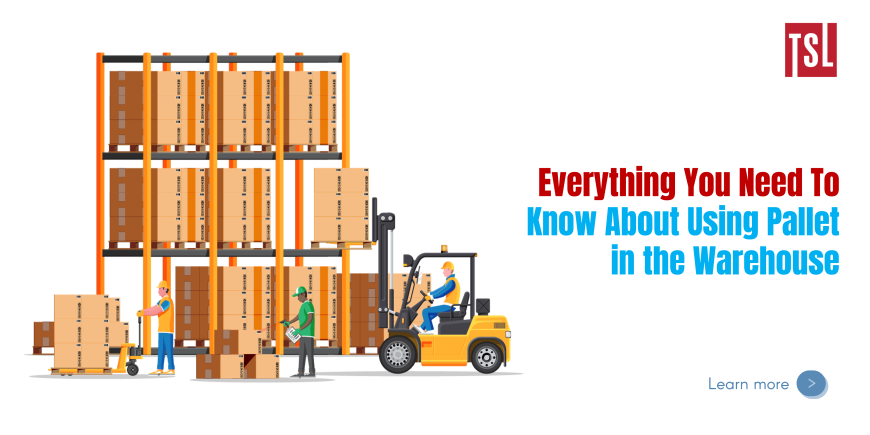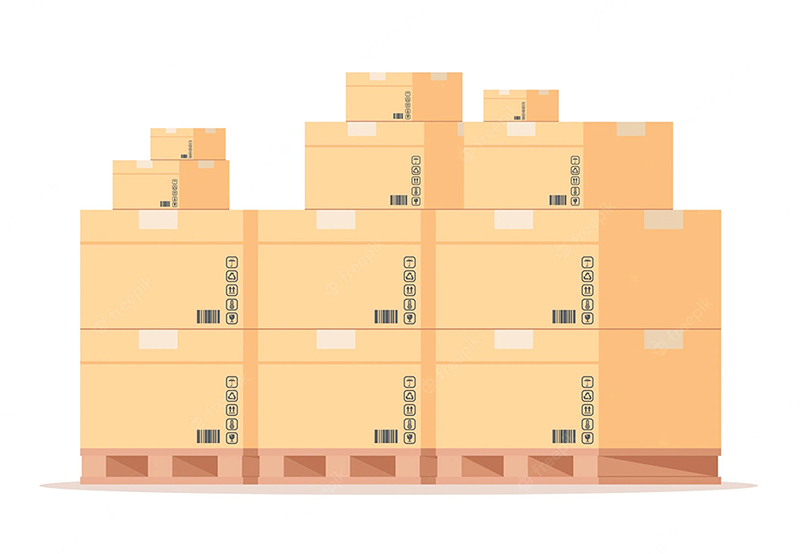Everything You Need To Know About Using Pallet in the Warehouse
B2B (Business to Business) enterprises not only have a different target client and business strategy, but they also typically handle significantly bigger amounts of items per shipment than B2C (Business to customer). As a result, managing B2B warehouse orders differs from managing B2C warehouse orders. Pallet picking is an important practice in B2B fulfillment that streamlines the movement of larger order volumes and multiple SKUs (stock keeping units).
Pallets’ structure serves as platforms on which to put products. It is designed as a flat surface with fixed bases to support the products on top. Pallets are flat constructions used in warehouses to storage, which are raised and moved by forklifts, pallet jacks, front loaders, jacking equipment, etc. A pallet can carry dozens or even hundreds of different types of merchandise, depending on the product’s features.
 Pallet stacking that is well organized not only helps to prevent superfluous stages, but it may also increase speed and accuracy in the warehousing process
Pallet stacking that is well organized not only helps to prevent superfluous stages, but it may also increase speed and accuracy in the warehousing process
Some challenges of pallet stacking in the warehouse:
- Inaccurate inventory and receiving information: Pallet stacking efficiency is highly dependent on accurate inbound information. Your staffs need current and precise information, such as the quantity of pallets stored, SKU layouts for empty pallets, and the specifications of the product. Incorrect inventory information might result in the selection of incorrect or missing pallets, creating delays in pallet retrieval and affecting order processing.
- Layout space: Many warehouses prioritize the number of items kept above the layout space between aisles. The aisles should not only enable employees to move easily but also allow forklifts, pallet trucks, trolleys, and pallet jacks.
- Inadequate equipment: Equipment like forklifts and pallet jacks is constantly used in various conditions, making problems unavoidable.
- Safety: Pallets in the warehouse are often heavy due to large product loads. Employees and management have to ensure that pallets do not exceed weight limits and are carefully stacked to avoid collapsing or damaging the cargo.
 As a result of these problems, here are five ways organizations may enhance pallet stacking in the warehouse to make B2B warehouse operations more efficient:
As a result of these problems, here are five ways organizations may enhance pallet stacking in the warehouse to make B2B warehouse operations more efficient:
- Design principles for palletizing items based on product types: The warehouse system must develop pallet stacking regulations and specific recommendations for stacking and de-stacking operations after receiving the items, depending on the type of the products. Pallet stacking standards commonly include maximizing height, putting things that are heavy on the bottom and lighter items on top, employing a “brick” pattern for each layer, grouping similar goods on the same pallet, and securing items on the pallet to minimize damage during transportation.
- Check the capacity of the forklift and rack: Overloading pallets can cause rack collapse, resulting in product damage and serious warehouse accidents. When loading products on the rack, verify that the weight is distributed equally between each shelf and that no individual pallet exceeds the set load limit.
- Allocate specific pallet locations: To construct specific pallet flow channels, B2B enterprises should compute the average inventory amount and have a good comprehension of product characteristics (storage requirements, quantity, etc.). Furthermore, areas designated for high-consumption product pallets can be put at lower places for quick access and order preparation, whereas pallets containing medium to low consumption products can be positioned at higher places. Pallet racking solutions are an excellent way to maximize warehouse space. These racks can improve pallet storage without increasing warehouse space. Pallet racks come in a variety of styles, each suited to a certain product (Selective rack, Double-deep rack, Drive-In/Drive-Thru rack, Push-Back Rack, and so on).
- Barcode identification for each pallet: Assigning a unique barcode to each pallet can help employees access crucial information such as load capacity, SKU, storage location, etc., without the need for manual documentation during the receiving process. Such information reduces the need for double-checking between different departments, streamlining warehouse operations.
- Enhance pallet visibility and status: It is essential to have accurate and detailed pallet location information. It is also necessary to manage and update real-time data on weight, odd/even pallet count, and SKU quantities per pallet. Proper information management allows warehouse staff to conduct the picking process more efficiently, boosting the efficiency and accuracy of order fulfillment.
 In all types of warehouses, the task of improving the pallet loading process is not simply to increase the productivity of warehouse staffs. It is also the basis for saving time/resources for the entire operation.
In all types of warehouses, the task of improving the pallet loading process is not simply to increase the productivity of warehouse staffs. It is also the basis for saving time/resources for the entire operation.
What is the easiest approach you can find?
Many Vietnamese warehouse operations are currently using warehouse management systems that control pallet location to solve this challenges. Your business will gain advantage not only by increasing the speed of pallet handling, also from a breakthrough in rack management, location capacity, operation, KPI evaluation, and more due to the warehouse management system.
In the Vietnamese market, TSL – a company that has successfully consulted and implemented the Warehouse Management System (WMS). TSL’s team of experts can provide you advice and assist you in making the best decision for your company.
Contact us today for a free consultation. And start your journey to improve the efficiency of your supply chain.








